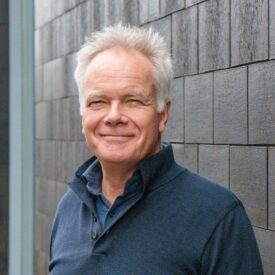Climate mitigation and adaptation

Climate mitigation and adaptation
Renewable, circular and nature
The climate is changing rapidly due to global warming as a result of CO₂ emissions. The Paris agreements, that agreed to stay below 1.5 degrees of warming already seems unachievable. With all the consequences for weather extremes, forest fires, drought, biodiversity loss, soil erosion and sea level rise. The simultaneous use of renewable energy and the transition to a circular economy as well as more sustainable land use can help turn the tide and adapt to the changes.
We can deal with climate change in two ways:
Climate mitigation: our contribution to limiting the extent or speed of global warming
Climate adaptation: our ability to reduce vulnerability to climate change or to take advantage of the opportunities offered by a changing climate.
Renewable energy: climate mitigation
Reducing fossil fuels and replacing them with renewable energy is the most effective way to tackle climate change. In the Western world, the use of renewable energy sources such as solar, wind and biomass is growing steadily. In Sub-Saharan Africa, a large part of the population does not even have access to electricity. This offers the opportunity to set up a renewable energy supply system from the outset and thus contribute to climate mitigation. We contribute to this through the extensive European GET.invest programme, which is intended to realise financing for such projects. We implement the GET.invest Finance Catalyst sub-programme. In addition, our pellet factory in South Africa makes a significant direct and indirect contribution to climate mitigation. Directly by using wood pellets instead of coal or other fossil fuels. Indirectly by removing Alien Invasive Trees to restore the original ecosystem and thus the water supply. This also contributes to climate adaptation because the original flora needs less water and makes the community and environment less vulnerable for drought.
Circular Economy: climate mitigation
In a circular economy, we use raw materials more sparingly. Fossil raw materials are replaced as much as possible by recycled or biobased materials, which reduces CO₂ emissions. By designing products and packaging more circularly, fewer materials and raw materials areneeded and the material that is needed can easily be reused. This makes production processes more economical and less material needs to be burned or dumped. All of this contributes to climate mitigation. As Circular Economy team we focus on sustainable packaging, circular electronics and circular plastics. One specific project is the carbon storage in buildings.
Sustainable land use: climate mitigation and adaptation
Stimulating the use of ecosystem services that nature offers us, can turn the tide or provide perspective for regulating climate change. This involves both climate mitigation and climate adaptation.

(source: PBL,WUR,CICES)
Ecosystem services that counteract climate change (mitigation) include:
- CO₂ removal and storage (incl. preventing emissions)
- Making weather patterns more resilient (rainfall, wind)
- Restoring natural ecosystems (water conservation, fire safety)
Climate adaptation includes:
- Coastal and bank protection
- Preventing soil erosion
- Water storage/rainwater regulation
- Climate buffers (sponge, overflow)
- Cooling and humidity in urban areas
- Growing resilient crops
How do we contribute with sustainable land use?
As Sustainable Land Us team we execute several climate-related projects:
- CO₂ removal and storage: on behalf of DG Clima of the European Commission, we support a group of 70 experts in developing a uniform certification methodology.
- Restoring natural ecosystems: for our pellet factory, we remove invasive plants and trees that use a lot of water and restore the original vegetation. This also benefits fire safety.
- Exploratory studies for the embassy in Ghana and Ivory Coast and RVO to examine the consequences of cultivation on climate and how local farmers can adapt their horticultural and cacoa cultivation to climate change.
- Advice to the Dutch Interprovincial Organisation (IPO) for a fair distribution of additional resources from the renewed European agricultural policy for the benefit of agricultural nature and landscape management, with more budget for climate measures and agricultural water management.
- Sustainable green management Valkenburg and Meerssen: inventory of endangered animal species and natural values to align municipal green management with climate adaptation and biodiversity.
Other
themes
Want to
know more?
Contact us!






